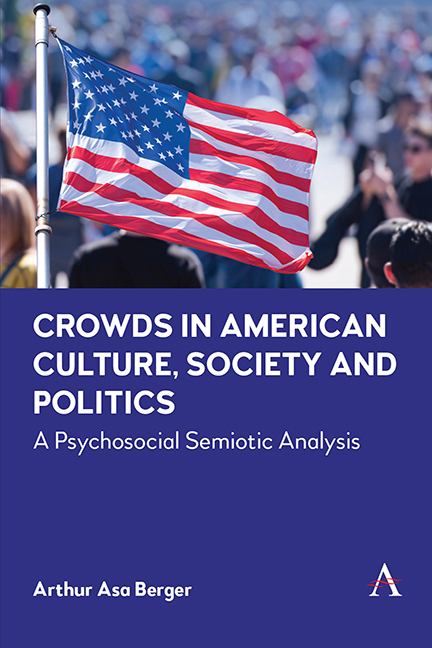3 - Group Psychology and the Analysis of the Ego
Published online by Cambridge University Press: 28 February 2024
Summary
Freud wrote his book in 1921, many years after the publication of Le Bon’s The Crowd. Freud commented on the book in his work on group psychology since they were both, in many respects, writing about the same topic.
Freud begins his book, in his introduction, by explaining that individual psychology and group psychology are really two sides of the same coin (Figure 3.1). He explains that the mental health of individuals is almost always connected to others so that individual psychology is also, at the same time, social or group psychology.
Group psychology, he adds, deals with individuals as they are members of some component of a group, such as a race, a caste, a nation, an institution, or of a crowd of people organized for a particular purpose into a group. This leads him to a discussion of Le Bon and his notion of the group mind.
Freud asks three questions we must consider when dealing with group psychology (1922:3):
1. What is a group?
2. How does it exercise a decisive influence over the mental life of individuals?
3. What is the nature of the change it forces on individuals?
He mentions Le Bon's ideas about individuals in groups being affected by contagion and heightened suggestibility but does not recognize, Freud points out, that contagion is best understood as a manifestation of suggestibility. He adds that all the features of groups that Le Bon discusses can be explained by psychoanalysts: the fact that in groups people lose their individual inhibitions, demand illusions, and are as strongly influenced by what is false as what is true. After dealing with Le Bon's ideas, and saying its emphasis on unconscious aspects of mental life fits in with his thinking, Freud moves on to the theories of a psychologist, William McDougall, who wrote a book The Group Mind, that was published in 1920 and emphasizes the role of emotions in people in groups who behave like unruly children.
Freud discusses McDougall's ideas about dealing with the problems of groups by procuring for their members the characteristics of individuals, which membership in groups extinguish. This involves individuals recognizing their continuity, becoming aware of their self-consciousness, their traditions and customs, and associating with other groups.
- Type
- Chapter
- Information
- Crowds in American Culture, Society and PoliticsA Psychosocial Semiotic Analysis, pp. 31 - 36Publisher: Anthem PressPrint publication year: 2023

